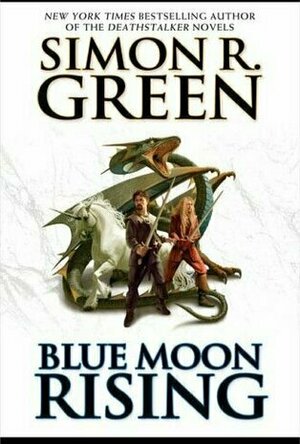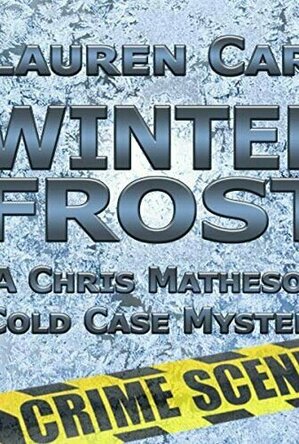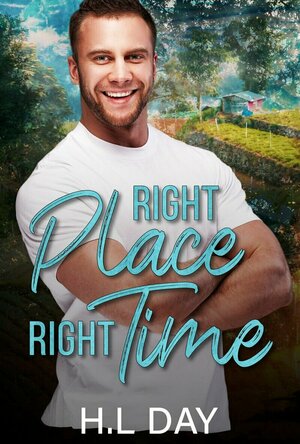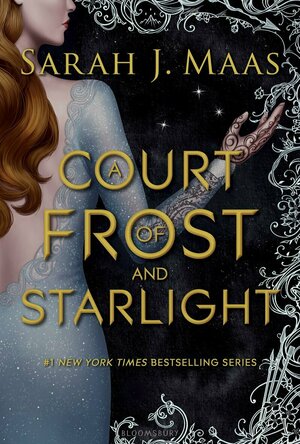Search
Search results
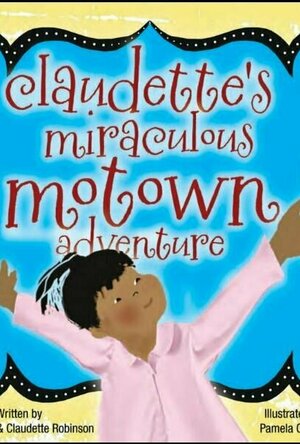
Claudette's Miraculous Motown Adventure
Claudette Robinson and A.K. Morris
Book
Are you looking for a fun book about music? Well, Claudette Miraculous Mototown Adventure is a good...
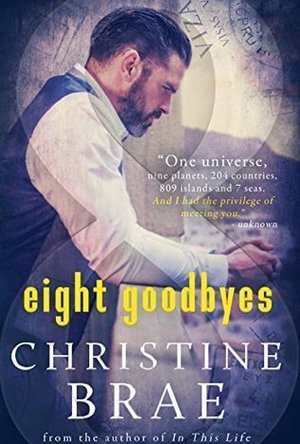
Eight Goodbyes
Book
One universe, nine planets, 204 countries, 809 islands and 7 seas, and I had the privilege of...
Contemporary Romance
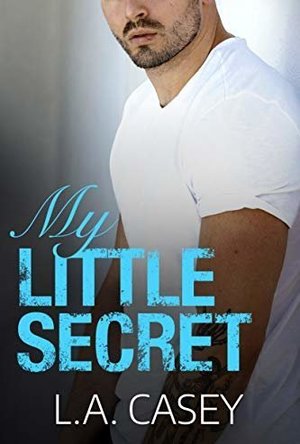
My Little Secret
Book
She’s a good girl. He’s a very bad boy. Sparks will fly when fate brings them together in this...
David McK (3649 KP) rated Blue Moon Rising (Forest Kingdom #1) in Books
Jun 24, 2022
Once upon a time ...
this was my favourite book.
That was back in the early 90s, back when I was in my tweens and back before I had discovered the likes of Terry Pratchett or Bernard Cornwell.
I then lost track of the author for a good two decades or so, only recently re-discovering him when I happened to chance across the 'GraphicAudio' version of the novel on Audible.
I did wonder what a GraphicAudio meant: simply that it was fully dramatized with a full cast, background music, sound effects etc etc - basically, everything but the actual visual aspect! - instead of only one, maybe two, no more than a handful of people reading the story.
As for that story? Firmly in the fantasy genre - Princes, dragons, unicorns, Princesses, magic, royal politics et al - however I do remember when I first read it all those years ago thinking that I had never come across anything quite like it before. That still holds true to this day: yes, it does have all those familiar elements of a classic Good vs Evil story, but the real delight is in the subverting of expectations, and in the story of Rupert and Julia and the DarkWood / Blue Moon.
this was my favourite book.
That was back in the early 90s, back when I was in my tweens and back before I had discovered the likes of Terry Pratchett or Bernard Cornwell.
I then lost track of the author for a good two decades or so, only recently re-discovering him when I happened to chance across the 'GraphicAudio' version of the novel on Audible.
I did wonder what a GraphicAudio meant: simply that it was fully dramatized with a full cast, background music, sound effects etc etc - basically, everything but the actual visual aspect! - instead of only one, maybe two, no more than a handful of people reading the story.
As for that story? Firmly in the fantasy genre - Princes, dragons, unicorns, Princesses, magic, royal politics et al - however I do remember when I first read it all those years ago thinking that I had never come across anything quite like it before. That still holds true to this day: yes, it does have all those familiar elements of a classic Good vs Evil story, but the real delight is in the subverting of expectations, and in the story of Rupert and Julia and the DarkWood / Blue Moon.
Lindsay (1779 KP) rated Winter Frost (Chris Matheson Cold Case Mystery #2) in Books
Apr 20, 2022
Lauren Carr does is once again. This book Winter Frost is filler of mystery. It will pull you into the story from the first page to last page. I loved it.
As we know Chris, and his family. We also have Helen and her daughter. We running into and meet Chris supposed dead wife Blair. We also have Murphy join forces with Chris Matheson. I love that the author did this. Bring Murphy and Tristan into the mix. They were more of sub characters but almost like the main characters.
The story was really told well. I can say the narrator did wonderful. I hope to see more mix of the other series like having Chris be brought in with his book club into the other series. I was really surprised and happy when I heard Murphy name when he was helping with Chris escape. We have action from the beginning to the end.
If you have not picked up Lauren Carr books you are missing something. Pick any of her books and you will be hooked. I can not wait to read more. So glad to have two more to read or listen to this time around. Mystery lovers and Crime and detective loves would love these books and series.
As we know Chris, and his family. We also have Helen and her daughter. We running into and meet Chris supposed dead wife Blair. We also have Murphy join forces with Chris Matheson. I love that the author did this. Bring Murphy and Tristan into the mix. They were more of sub characters but almost like the main characters.
The story was really told well. I can say the narrator did wonderful. I hope to see more mix of the other series like having Chris be brought in with his book club into the other series. I was really surprised and happy when I heard Murphy name when he was helping with Chris escape. We have action from the beginning to the end.
If you have not picked up Lauren Carr books you are missing something. Pick any of her books and you will be hooked. I can not wait to read more. So glad to have two more to read or listen to this time around. Mystery lovers and Crime and detective loves would love these books and series.
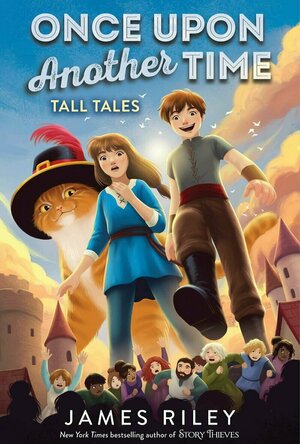
Tall Tales
Book
The second book in a new trilogy of twisted fairy tales from New York Times bestselling author James...
Merissa (13575 KP) rated Right Place, Right Time (The Pilsdale Chronicles #1) in Books
Jul 20, 2023
RIGHT PLACE, RIGHT TIME is the first book in The Pilsdale Chronicles. In it, we meet Ben, who left Pilsdale four years ago after his parents died, and Jasper, the father of Ben's best friend, Finn. Ben had had a crush on Jasper for years but thought nothing would come of it. When he returns to Pilsdale to sort out his aunt's house, he goes to see Finn. Unfortunately - or luckily - Finn isn't around, but Jasper certainly is.
This was a hug in a book! There is some angst but it's fairly low-key. There are some steamy scenes but they are entirely in keeping with the story and not just there to add sex appeal. And with a wonderful cast of supporting characters, plus the gorgeously described countryside, what more could I have asked for?
This was a great start to a series by a new-to-me author and I look forward to returning to Pilsdale in 2024 with the next book in the series. Definitely recommended by me.
** same worded review will appear elsewhere **
* A copy of this book was provided to me with no requirements for a review. I voluntarily read this book; the comments here are my honest opinion. *
Merissa
Archaeolibrarian - I Dig Good Books!
Jul 20, 2023
This was a hug in a book! There is some angst but it's fairly low-key. There are some steamy scenes but they are entirely in keeping with the story and not just there to add sex appeal. And with a wonderful cast of supporting characters, plus the gorgeously described countryside, what more could I have asked for?
This was a great start to a series by a new-to-me author and I look forward to returning to Pilsdale in 2024 with the next book in the series. Definitely recommended by me.
** same worded review will appear elsewhere **
* A copy of this book was provided to me with no requirements for a review. I voluntarily read this book; the comments here are my honest opinion. *
Merissa
Archaeolibrarian - I Dig Good Books!
Jul 20, 2023
Lyndsey Gollogly (2893 KP) rated His Game: The First Time in Books
Feb 5, 2024
🔞🔞🔞🔞
23 of 220
Kindle
His Game: The First Time
By Tirzah M.M. Hawkins
⭐️⭐️⭐️⭐️
Trigger warning and crap content
Rachel's your average teenage girl, fresh out of high school, excited about the secret trip her boyfriend surprised her with. She's been waiting forever for him to pop the question.
However, John isn't your average teenage boy. And his idea of a fun trip is far from a proposal.
John's growing into his tastes. Tastes for things unmentionable in polite society. Read this coming-of-age story about how a violent artist got his start.
Each book in the His Game series is a standalone story and can be read in any order.
So I read His Game: The woods as an arc a while ago and I just needed to read this one too this is how John starts his game and it’s a pretty twisted tale. This is not for everyone it’s graphic and dark. It’s always hard to say I liked these kind of books but when they are well written and provoke a response that the author sets out to achieve then they are worth the read.
I received an advance review copy for free, and I am leaving this review voluntarily.
23 of 220
Kindle
His Game: The First Time
By Tirzah M.M. Hawkins
⭐️⭐️⭐️⭐️
Trigger warning and crap content
Rachel's your average teenage girl, fresh out of high school, excited about the secret trip her boyfriend surprised her with. She's been waiting forever for him to pop the question.
However, John isn't your average teenage boy. And his idea of a fun trip is far from a proposal.
John's growing into his tastes. Tastes for things unmentionable in polite society. Read this coming-of-age story about how a violent artist got his start.
Each book in the His Game series is a standalone story and can be read in any order.
So I read His Game: The woods as an arc a while ago and I just needed to read this one too this is how John starts his game and it’s a pretty twisted tale. This is not for everyone it’s graphic and dark. It’s always hard to say I liked these kind of books but when they are well written and provoke a response that the author sets out to achieve then they are worth the read.
I received an advance review copy for free, and I am leaving this review voluntarily.
Jesters_folly (230 KP) rated The Cloverfield Paradox (2018) in Movies
Oct 7, 2020
Contains spoilers, click to show
The Cloverfield Paradox is the third and (at time of writing) the last Cloverfield film and it's main purpose is to explain where Clover and his friends come from. Does it do this in an easy to follow, straight forward way that fits easily into the already established Cloverfield universe? Hell no.
The first film was a found footage monster movie and the second film was a psychological thriller that was loosely linked to the first so naturally the third film is a hard Sci-Fi set in the near future. The earth has used up most of it's resources and everyone is nearly at war, the last hope is the Cloverfield space-station which has the 'Shepard' beam, an experimental particle beam that, if it works, will produce an endless supply of energy. The lack of resources and looming war are the only problems, there are no monsters and there never were.
The Cloverfield Paradox mainly follows the crew of the space station and quickly turns into a Sci-Fi horror in a similar vain to 'Event Horizon'. Basically the crew activate the Shepard Beam, it works then crashes and the earth disappears. Then strange things start to happen. At the same time something happens on earth, there is an attack on America and a few people run around trying to find out what happens and one hides in a bunker similar to the one in 10 Cloverfield Lane. Meanwhile the crew of the Cloverfield try to find out where the earth is.
As a Sci-Fi, the Cloverfield Paradox works well, it uses just enough jargon and theoretical physics and as a horror it works well, killing off the cast in weird and wonderful ways. And as an explanation for Clover well SPOILER that's what attacked Earth, of course this is only reviled right at the end and there is no explanation to how they got to the past in the other film's. Except there is, about twenty minuets into the film, after everything has been set up but before everything goes wrong there is a news program shown on a monitor whilst the crew begin to start their experiments. The news show is interviewing the author of a book called 'The Cloverfield Paradox' and, in the interview the author explains everything from what is going to happen to how Clover and the other monsters appear on earth even though know one in the future knows anything about them, so pay attention.
One thing the all three Cloverfield films did well was all of the extra stuff. The original film started with tease trailers, infomercial's form company's seen in the film and fake news reels. This kind of marketing continued for all three films and other information was made available including one big link between Cloverfield and the Cloverfield Paradox. The last scene of the first film, the scene that was set before everything that happened with the couple by the beach shows something falling from the sky in the background, this is part of the Cloverfield space station.
With the revelation that the creatures now exist all through time a fourth film was rumoured - Overlord- however, even though the film was made by the same company and the same people it was never part of the Cloverfield universe and is/was meant to be the start of it's own franchise. Even though it could easily fit even as a ret con.
The first film was a found footage monster movie and the second film was a psychological thriller that was loosely linked to the first so naturally the third film is a hard Sci-Fi set in the near future. The earth has used up most of it's resources and everyone is nearly at war, the last hope is the Cloverfield space-station which has the 'Shepard' beam, an experimental particle beam that, if it works, will produce an endless supply of energy. The lack of resources and looming war are the only problems, there are no monsters and there never were.
The Cloverfield Paradox mainly follows the crew of the space station and quickly turns into a Sci-Fi horror in a similar vain to 'Event Horizon'. Basically the crew activate the Shepard Beam, it works then crashes and the earth disappears. Then strange things start to happen. At the same time something happens on earth, there is an attack on America and a few people run around trying to find out what happens and one hides in a bunker similar to the one in 10 Cloverfield Lane. Meanwhile the crew of the Cloverfield try to find out where the earth is.
As a Sci-Fi, the Cloverfield Paradox works well, it uses just enough jargon and theoretical physics and as a horror it works well, killing off the cast in weird and wonderful ways. And as an explanation for Clover well SPOILER that's what attacked Earth, of course this is only reviled right at the end and there is no explanation to how they got to the past in the other film's. Except there is, about twenty minuets into the film, after everything has been set up but before everything goes wrong there is a news program shown on a monitor whilst the crew begin to start their experiments. The news show is interviewing the author of a book called 'The Cloverfield Paradox' and, in the interview the author explains everything from what is going to happen to how Clover and the other monsters appear on earth even though know one in the future knows anything about them, so pay attention.
One thing the all three Cloverfield films did well was all of the extra stuff. The original film started with tease trailers, infomercial's form company's seen in the film and fake news reels. This kind of marketing continued for all three films and other information was made available including one big link between Cloverfield and the Cloverfield Paradox. The last scene of the first film, the scene that was set before everything that happened with the couple by the beach shows something falling from the sky in the background, this is part of the Cloverfield space station.
With the revelation that the creatures now exist all through time a fourth film was rumoured - Overlord- however, even though the film was made by the same company and the same people it was never part of the Cloverfield universe and is/was meant to be the start of it's own franchise. Even though it could easily fit even as a ret con.
Katie Burrows (1 KP) rated A Court of Frost and Starlight: Court of Thorns and Roses in Books
May 21, 2018
More time with beloved characters (2 more)
Got to find out more about side character backstories
The development of Feyre's sisters and their post-Cauldron struggles felt realistic and honest
No real point or feeling to the plot (4 more)
3/4 of the way through the book, still not sure what the point is
The sudden decision to write from multiple perspectives in this book (as opposed to just Feyre's) felt cheap
It's a Christmas story that was released May 1st, which was a strange publishing choice
After all the excitement in the precious book, the pace of this one was too slow
Not as exciting as previous installments
I wanted to love this book as much as I loved the third book in the series, but it just wasn't as good. It felt as though the author was maybe forced to publish the next installment of the series even though she didn't have a fully fleshed-out story yet.
While I enjoyed learning the characters' backstories, I was not a fan of how the author switched character perspectives each chapter. It was tedious to keep up with at times, and felt like a forced way to introduce the backstories. In the last installment, the backstories we heard were drawn out by plot and circumstance, which helped drive the story as we learned relevant info at relevant times. In this book it felt as though the revealing of character info was gratuitous, almost an excuse to avoid developing an actual plot.
Speaking of plot, the story was slow (in part because of continually switching between so many character perspectives during the same stretches of time), and because for most of the book nothing important or exciting happens.
The cover art was gorgeous. The dust jacket is absolutely beautiful. But, this is largely a Christmas or winter solstice story, and might have been more aptly published in late fall or closer to the holiday season, rather than the beginning of May.
I would still love to see more books in this series, but only if future installments see a return to the action and intrigue of the first 3 stories.
While I enjoyed learning the characters' backstories, I was not a fan of how the author switched character perspectives each chapter. It was tedious to keep up with at times, and felt like a forced way to introduce the backstories. In the last installment, the backstories we heard were drawn out by plot and circumstance, which helped drive the story as we learned relevant info at relevant times. In this book it felt as though the revealing of character info was gratuitous, almost an excuse to avoid developing an actual plot.
Speaking of plot, the story was slow (in part because of continually switching between so many character perspectives during the same stretches of time), and because for most of the book nothing important or exciting happens.
The cover art was gorgeous. The dust jacket is absolutely beautiful. But, this is largely a Christmas or winter solstice story, and might have been more aptly published in late fall or closer to the holiday season, rather than the beginning of May.
I would still love to see more books in this series, but only if future installments see a return to the action and intrigue of the first 3 stories.
